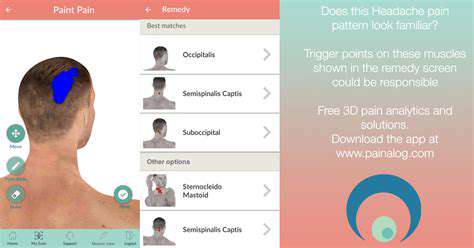Introduction to Shooting Pain in the Head
Understanding the Causes of Shooting Pain in the Head
Shooting Pain at the back of the head can stem from a variety of causes, making it essential to understand the underlying factors involved. Common triggers include tension headaches, which are often linked to stress and muscle strain. Over time, these tensions can become chronic and lead to episodic shooting pain.
Another potential cause could be cervical spondylosis, also known as neck arthritis. This degenerative condition affects the discs and joints in the neck, leading to stiffness, pain, and sometimes shooting sensations that radiate to the head.
Occipital neuralgia is a more specific condition that results from irritation or injury to the occipital nerves. It is characterized by sharp, shooting pain that begins at the base of the skull and can radiate toward the forehead. This type of pain can often be mistaken for migraines or tension headaches.
In some cases, shooting pain may be caused by more serious conditions such as a pinched nerve or even a brain injury. These conditions warrant immediate medical evaluation and intervention to prevent further complications.
Overall, identifying the precise cause of Shooting pain at the back of the head is crucial for effective treatment. A healthcare professional can conduct a proper assessment and guide the appropriate course of action.
Symptoms Accompanying Shooting Pain in the Head
Alongside shooting pain, individuals may experience a spectrum of symptoms that can aid in diagnosing the underlying cause. Commonly reported symptoms include tenderness or soreness in the neck and shoulder region, which may suggest muscle strain or tension headaches.
Some patients report associated visual disturbances, like blurriness or the sensation of flashing lights, which can occur in conjunction with migraines or severe headaches. These visual symptoms can be disorienting and may require further examination by an eye specialist.
Another accompanying symptom can be nausea or vomiting, particularly in the case of migraines. This can significantly impact daily living and might indicate the need for dietary modifications or medication adjustments.
Additionally, individuals may notice sensitivity to light or sound, conditions often linked with migraine episodes. This heightened sensitivity can dramatically affect a person’s ability to engage in normal activities.
Overall, recognizing the full array of symptoms that accompany shooting pain can provide valuable insights into the severity and nature of the condition, guiding both patients and healthcare providers toward effective treatment options.
Treatment Options for Shooting Pain in the Head
Treatment for shooting pain at the back of the head varies depending on the identified cause, but several strategies may be beneficial. For tension-type headaches, stress management techniques such as meditation, yoga, and regular exercise can help reduce muscle tension.
Pain relief medications, including over-the-counter options like ibuprofen or acetaminophen, can often provide immediate relief. In more severe cases, a healthcare provider may prescribe stronger medications or muscle relaxants for discomfort.
Physical therapy is another effective treatment route that can help alleviate pain through guided exercises and stretching. A physical therapist can work with patients to improve posture, strength, and flexibility, thus reducing the likelihood of future pain episodes.
For conditions like occipital neuralgia, nerve blocks or other interventional pain management techniques may be recommended to directly target the source of pain and provide longer-lasting relief.
Ultimately, addressing lifestyle factors such as sleep hygiene, hydration, and nutrition can also play a crucial role in preventing shooting pain. Maintaining an overall healthy lifestyle enhances pain management and improves the body's resilience against triggers.
Common Causes of Shooting Pain at the Back of the Head

Muscle Strain and Tension
One of the most common causes of shooting pain at the back of the head is muscle strain and tension. This type of pain often develops due to poor posture or prolonged activities that stress the neck muscles. Activities such as sitting for long hours at a desk or using a smartphone without proper ergonomics can lead to muscle tightness.
When the muscles at the back of the neck and head become tense, they can create referred pain that feels like shooting sensations. Regular stretching and taking breaks can alleviate this discomfort.
Moreover, relaxation techniques such as yoga and deep breathing can significantly reduce muscle tension and improve overall posture.
Migraine and Cluster Headaches
Migraines and cluster headaches are known for causing severe pain, often presenting as shooting sensations. These headaches can be triggered by various factors, including stress, dietary choices, and environmental changes. Migraine sufferers may experience visual disturbances, nausea, or sensitivity to light, in addition to the head pain.
Cluster headaches, on the other hand, usually occur in cyclical patterns and can cause excruciating pain localized at the back of the head and around the eyes. Identifying triggers and managing them can help reduce the frequency and intensity of these headaches.
Over-the-counter medications or prescribed treatments can assist in managing the pain associated with migraines and cluster headaches as well.
Cervical Spondylosis
Cervical spondylosis is a degenerative condition that affects the cervical spine, causing pain and stiffness. Shooting pain at the back of the head may arise when the nerves are compressed due to the wear and tear of the vertebrae and discs in the neck. Age-related changes, injuries, and improper body mechanics can contribute to this condition.
Individuals experiencing this type of pain should seek medical advice, as physical therapy or specific exercises can strengthen neck muscles and minimize discomfort. In some cases, other treatments such as medications or injections may be required to alleviate symptoms.
Additionally, maintaining proper posture during everyday activities is crucial to prevent exacerbating the condition.
Nerve Impingement or Neuralgia
Nerve impingement occurs when nearby structures exert pressure on a nerve, causing pain that can manifest as shooting sensations. Neuralgia, especially occipital neuralgia, specifically affects the occipital nerves at the back of the head, leading to sharp, shooting pain. Understanding and identifying the underlying cause of nerve irritation is vital for proper treatment.
Common causes of nerve impingement or neuralgia include cervical spine degeneration, trauma, or inflammatory conditions. Treatments can range from physical therapy, medication, or even nerve blocks in more severe cases.
Additionally, implementing ergonomic adjustments to workspaces and engaging in regular exercise can promote nerve health and reduce the likelihood of recurrence.
Triggering Factors to Consider
Physical Strain and Posture
One of the most common triggers for shooting pain at the back of the head is physical strain, often exacerbated by poor posture. Prolonged activities such as sitting at a desk or hunching over a smartphone can lead to tension in the neck and back muscles, resulting in discomfort that radiates toward the head.
To mitigate this issue, it's essential to maintain a proper ergonomic setup while working or using handheld devices. Regular breaks to stretch and strengthen the neck and back can also help alleviate tension and prevent the build-up of pain.
Migraines and Headaches
Migraines and tension-type headaches can also manifest as shooting pain at the back of the head. These painful episodes may be triggered by various factors, including stress, dehydration, and certain foods. For some individuals, neck and head tension can be a precursor to headaches, causing discomfort that feels sharp or sudden.
Identifying headache triggers is crucial for management. Keeping a headache diary can help pinpoint specific factors leading to pain, allowing for more effective treatment strategies, such as lifestyle modifications, over-the-counter medications, or prescribed therapies.
Nerve-Related Issues
Nerve-related issues, such as occipital neuralgia, can cause shooting pain at the back of the head. This condition arises when the occipital nerves, which run from the top of the spinal cord up to the scalp, become inflamed or irritated. Symptoms often include sharp, jabbing pain that may come and go and can sometimes be accompanied by tenderness in the scalp.
Managing occipital neuralgia often requires a multidisciplinary approach. Physical therapy, nerve blocks, and prescription medications may be recommended to address the underlying nerve irritation and provide relief from the pain.
Underlying Health Conditions
In some cases, shooting pain at the back of the head may indicate an underlying health condition. Several medical issues, including hypertension, infections, or cervical spondylosis, can lead to discomfort in this area. It's essential to be aware of accompanying symptoms, such as visual disturbances or balance issues, which may suggest a more serious condition.
If pain persists or is accompanied by alarming symptoms, seeking medical evaluation is crucial. A healthcare professional can conduct appropriate examinations or imaging studies to determine the underlying cause and recommend suitable treatment options tailored to individual needs.
Seeking Medical Attention

When to See a Doctor
It is crucial to identify when shooting pain at the back of the head warrants medical attention. If the pain is sudden and severe, it's essential to seek help immediately. This type of pain may be indicative of a more serious condition that needs urgent care.
Additionally, if the shooting pain is accompanied by other symptoms such as dizziness, vision changes, or difficulty speaking, you should consult a healthcare professional as soon as possible.
Persistent pain that lasts for several days without relief is another sign that you shouldn't ignore. Early intervention can often lead to better outcomes, including faster recovery.
Finally, if the pain is affecting your daily life or preventing you from performing normal activities, it’s a good idea to reach out to a doctor for an evaluation.
Possible Diagnostic Tests
When you visit a healthcare provider for shooting pain at the back of the head, they may recommend a variety of diagnostic tests to determine the underlying cause. These tests could include imaging studies, such as MRIs or CT scans, to get a clearer picture of what’s happening in your brain and spinal cord.
A healthcare professional may also conduct a physical examination and neurological tests to assess your reflexes, coordination, and strength.
Blood tests could be another part of the diagnostic process to rule out infections or other health issues that might be contributing to your symptoms.
Understanding the results of these tests is vital for developing a tailored treatment plan aimed at addressing the root cause of the pain.
Potential Treatment Options
Treatment for shooting pain at the back of the head can vary significantly based on the underlying cause. Medications, such as anti-inflammatory drugs or muscle relaxants, might be prescribed to alleviate pain and reduce inflammation.
Physical therapy is another common treatment option that can help improve mobility and provide exercises to strengthen the muscles in your neck and upper back.
In some cases, doctors may recommend lifestyle changes, including stress management techniques and ergonomic adjustments to workspaces, to minimize discomfort.
In more severe cases, surgical interventions may be needed if there is structural damage or a serious medical condition identified during diagnosis.
Effective Remedies and Management Strategies

Understanding the Causes of Shooting Pain
Shooting pain at the back of the head can stem from a variety of causes. One common reason is tension headaches, often triggered by stress or muscle strain.
These headaches can lead to pinpointing discomfort in the cervicals, which may feel like a sharp sensation riding along the neck and skull junction.
Another potential cause is migraines, which can yield intense pain that radiates to different areas of the head. Hypersensitivity to light, noise, and certain smells may accompany migraine attacks.
Cervical spine issues, such as herniated discs, can also lead to pain radiating to the back of the head. This occurs due to nerve compression and requires careful evaluation by a medical professional.
Less common causes may include infections or inflammation. It's essential to recognize these symptoms and seek appropriate medical attention when necessary.
Diagnostic Approaches
Proper diagnosis of shooting pain in the back of the head is crucial for effective treatment. A healthcare provider will typically begin with a detailed medical history and symptom evaluation.
Physical examinations often include tests for neck movement and posture assessment, which may provide additional insights into the underlying issue.
Imaging tests, such as MRIs or CT scans, may be recommended to visualize the cervical spine and identify any structural issues. These tests help ascertain whether there are any herniated discs or nerve impactions.
In some cases, blood tests might be indicated to rule out infections or inflammatory conditions. This step ensures a comprehensive approach to understanding the patient's health status.
Once a diagnosis is established, a tailored treatment plan can be created, allowing for targeted relief and management of the shooting pain.
Effective Remedies and Management Strategies
Managing shooting pain at the back of the head effectively involves a combination of lifestyle adjustments and medical interventions. Over-the-counter pain relievers, such as ibuprofen or acetaminophen, can provide immediate relief.
Physical therapy is another vital component, focusing on strengthening neck muscles and improving posture. This helps alleviate tension and prevent future occurrences of pain.
Alternatively, alternative treatments like acupuncture and chiropractic care have been shown to help manage pain effectively for some individuals. These approaches may offer relief by promoting relaxation and realigning the spine.
Stress management techniques, including yoga, meditation, and deep-breathing exercises, can play a significant role in reducing tension headaches. Learning to manage stress is crucial for long-term pain relief.
Lastly, maintaining a healthy lifestyle characterized by regular exercise, proper hydration, and a balanced diet can strengthen the body and potentially minimize headache occurrences.